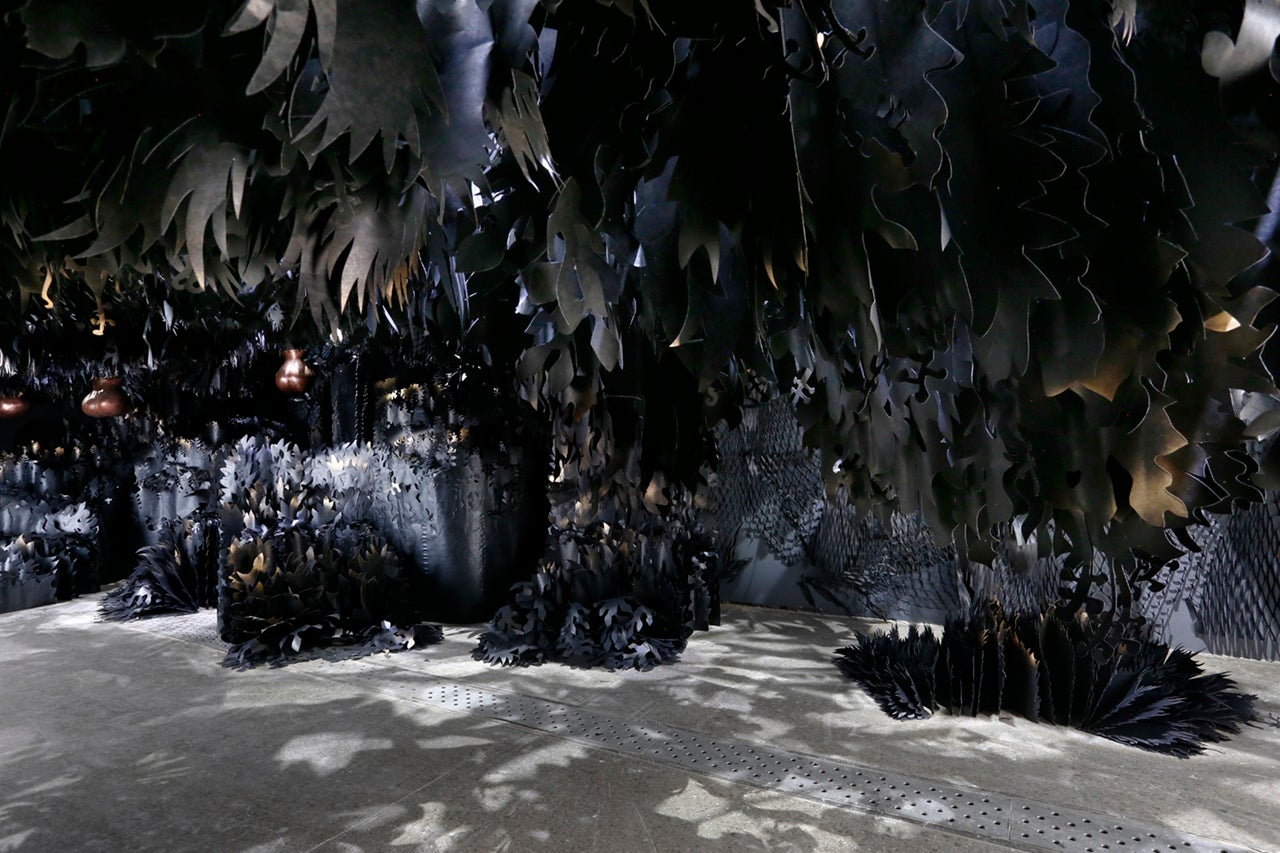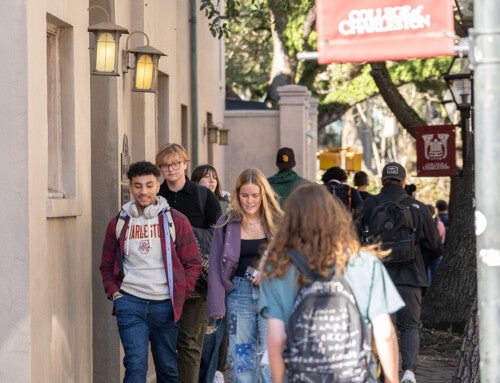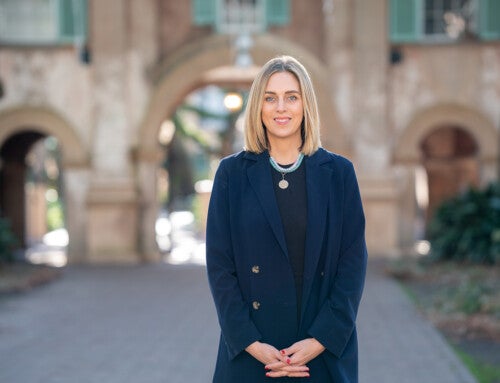Beauty amid pain. Wealth against poverty. Lavishness alongside austere living. Those are the juxtapositions inherent to the Holy City that “Cry Joy Park — Gardens of Dark and Light,” the new exhibition at the Halsey Institute of Contemporary Art, aspires to unravel.
Charleston’s complex history of wealth, power and majestic buildings alongside racial and socioeconomic inequality inspired artist Jennifer Wen Ma to create “Cry Joy Park,” an investigation of the city’s history and social landscape. On view from May 17, 2019, to July 6, 2019, “Cry Joy Park” is an official visual arts offering of the City of Charleston’s Piccolo Spoleto Festival USA 2019.
The exhibit offers an immersive, multisensory experience that explores the juxtaposition of utopia and dystopia. Walking into the Halsey gallery, visitors are enveloped in tangles of an oversized black garden, employing Ma’s signature visual language of honeycomb paper structures. Crawling vines and branches heavy with giant leaves and fruits are complimented by motion-sensored portions of the garden that retreat when approached by the visitor. At the far end of the garden, one must push through a flower portal, emerging from darkness into the garden of light where the comforting ambiguity is replaced with glaring clarity. Mirroring the responsive intelligence of the dark garden, portions of this cut-paper foliage move to greet visitors in an extraverted display.
Two landscape paintings of ink-on-glass stand as walls to separate the gardens. The pictorial planes further the landscape created by the gardens, while the paintings’ mirrored finish reflects the built environment and places the viewer’s reflection within this constructed paradise.
Ma’s work has been shown around the world, including the Ullens Center for Contemporary Art, Beijing; National Art Museum of China, Beijing; the Guggenheim Museum, New York and Bilbao; and the Metropolitan Museum of Art, New York. Her installation opera Paradise Interrupted was performed at Spoleto Festival USA in 2015, New York’s Lincoln Center Festival and Singapore International Festival of Art in 2016, before going on tour in Asia. In 2008, Ma served as one of seven members of the core creative team for the Beijing Olympics opening ceremony and received an Emmy for the U.S. broadcast.
Ma says exploring Charleston on past visits left her contemplating the relationship between the city’s beauty and rich culture and its history of racial and socioeconomic oppression. Her feelings spilled out to create the gardens of dark and light that illuminate the opposing forces existing within the whole and the inseparable union between utopian ideals and dystopic realities created when human societies exclude some members from sharing in the full benefits of the paradises they build.
“My heart and mind are full and heavy from the time spent in Charleston. This exhibition is a reflection of these moving and profound experiences,” says Ma. “Under the canopy of the ‘Cry Joy Park — Gardens of Dark and Light,’ can we come together and equitably share this world we have built together?”
The exhibition will include series of community dinners celebrating some of those who have contributed to the making of the paradise that is Charleston, but might not have been invited to the harvest table in times past. Taking place in the galleries, these culinary feasts will feature meals by local chefs and will include performances and guided conversations on specific environmental justice themes related to the exhibition such as spirituality, food security, land politics, re-entry into society following incarceration and education.
“Cry Joy Park” will also serve as a visual platform for interdisciplinary performances taking place during the exhibition period. These performances will take the form of dancing, singing, drumming, storytelling, poetry and other theatrical exchanges. The Halsey Institute is collaborating with the faculty and students of College of Charleston and with a variety of community groups and artists.
“Cry Joy Park — Gardens of Dark and Light” is co-curated by Mark Sloan, director and chief curator of the Halsey Institute, and Bryan Granger, director of exhibitions and public programs at the Halsey. Ma produced the exhibition with the help of her studio staff, as well as students from the College of Charleston. The exhibit is supported in part by the National Endowment for the Arts, the Henry and Sylvia Yaschik Foundation and the E. Rhodes and Leona B. Carpenter Foundation.






